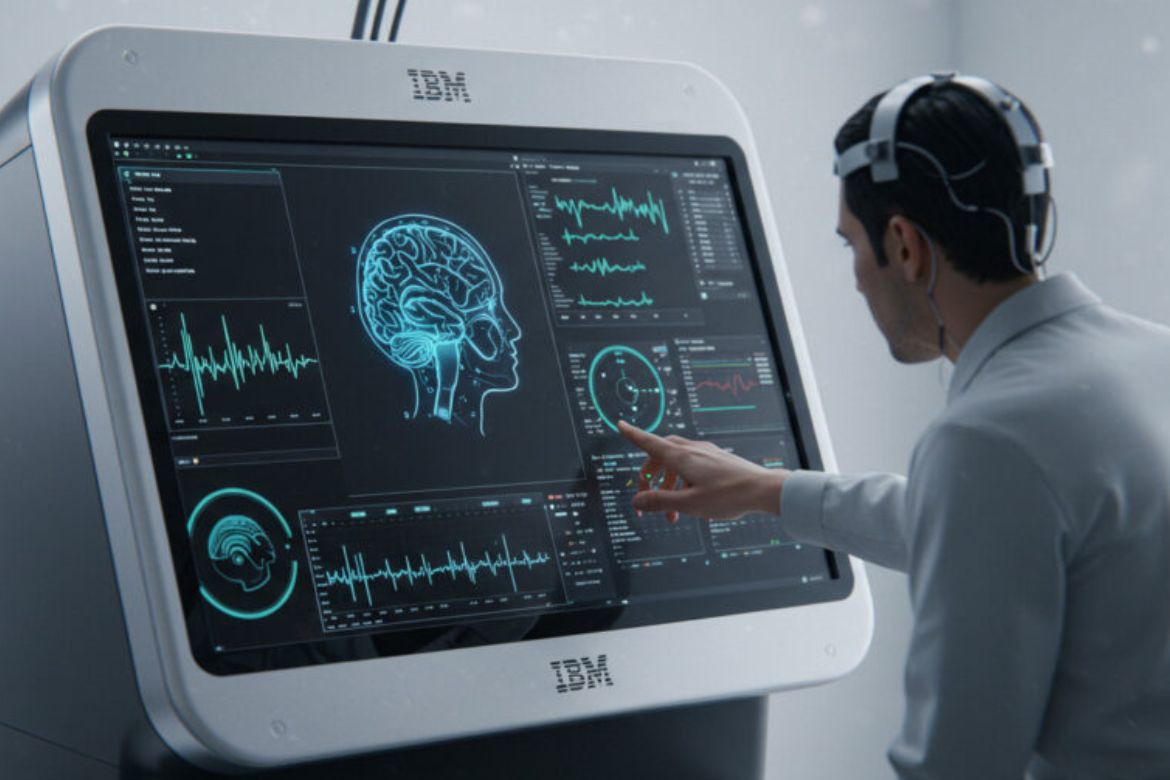In a move that could redefine the future of human-machine interaction, IBM has teamed up with Inclusive Brains, a pioneering French neurotech startup, to develop non-invasive brain-machine interfaces (BMIs) that allow users to control digital systems using only their thoughts.
Announced Tuesday, the collaboration merges AI, quantum computing, and multimodal neurotechnology—pushing the boundaries of what it means to interact with machines in today’s digital-first world.
🔬 From Thought to Action—No Wires, No Surgery
Unlike invasive systems like Neuralink, which require surgical brain implants, Inclusive Brains’ approach is completely non-invasive. Its smart interfaces interpret brainwaves, eye movements, facial expressions, and even physiological stress indicators to translate thought into digital commands—hands-free, speech-free, and touch-free.
IBM’s Granite foundation models will be leveraged to generate and test hundreds of thousands of machine-learning algorithm combinations. The aim? To find the most effective brain signal interpretation strategies and build highly personalized AI systems for users based on their unique cognitive patterns.
Add quantum machine learning to the mix, and you’re looking at brain-computer systems capable of adjusting in real time to how you feel, focus, and function.
🏥 Abu Dhabi at the Heart of Human-Tech Integration
This isn’t just R&D—it’s already in action. Inclusive Brains is actively testing its Prometheus BCI system in Abu Dhabi’s International Knee and Joint Centre, in partnership with renowned orthopedic surgeon Dr. Sebastien Parratte.
During surgery, the system measures the stress, attention, and cognitive load of medical staff in real time, potentially minimizing errors in high-pressure operating rooms. It’s the start of a new chapter where neurotech directly supports frontline professionals—from medicine to aviation.
The UAE’s central role is further emphasized by the appointment of Inclusive Brains’ CEO Prof. Olivier Oullier as a visiting professor at the Mohamed bin Zayed University of AI, in the Department of Human-Computer Interaction.
💡 Real-World Demonstrations Turning Heads
This technology isn’t stuck in the lab—it’s already making headlines:
- A woman with severe disabilities controlled a robotic arm to carry the Olympic torch in France.
- A mind-powered tweet was sent to French President Emmanuel Macron.
- The tech even enabled the first-ever neural amendment to a bill in the French Parliament—drafted and submitted using only brain signals.
🔓 Open Science Meets Ethical Tech
In a refreshing move, IBM and Inclusive Brains have committed to publishing their findings openly to fuel global innovation in ethical neurotechnology. The project adheres to international neuroethics guidelines, ensuring that user consent, data protection, and equitable access stay front and center.
“We’re proud to support inclusive healthcare innovation by offering IBM’s AI and quantum tech in a responsible and transparent way,” said Beatrice Kosowski, President of IBM France.
“This isn’t just a study. It’s the start of highly individualized interfaces that adapt to each user’s unique physical and cognitive profile,” added Prof. Oullier.
🌍 Why It Matters for the Gulf
With the UAE fast becoming a regional hub for AI, biotech, and digital health, this collaboration underscores the Gulf’s growing role in cutting-edge research and global impact. The technology has huge implications for:
- Accessibility: Empowering individuals with disabilities to independently use digital systems.
- Workforce efficiency: Monitoring cognitive load in sectors like healthcare, aviation, and defense.
- Mental wellness: Building neuroadaptive interfaces that reduce burnout and enhance focus.
🔮 The Takeaway
This isn’t science fiction. It’s science in motion. IBM and Inclusive Brains are building a future where your thoughts are your password, your controller, and your assistant—without a single word or touch.
As the world watches, the Gulf stands at the crossroads of this neurotech evolution. And if this partnership succeeds, your next interface may not be a screen or a button—but a thought.



